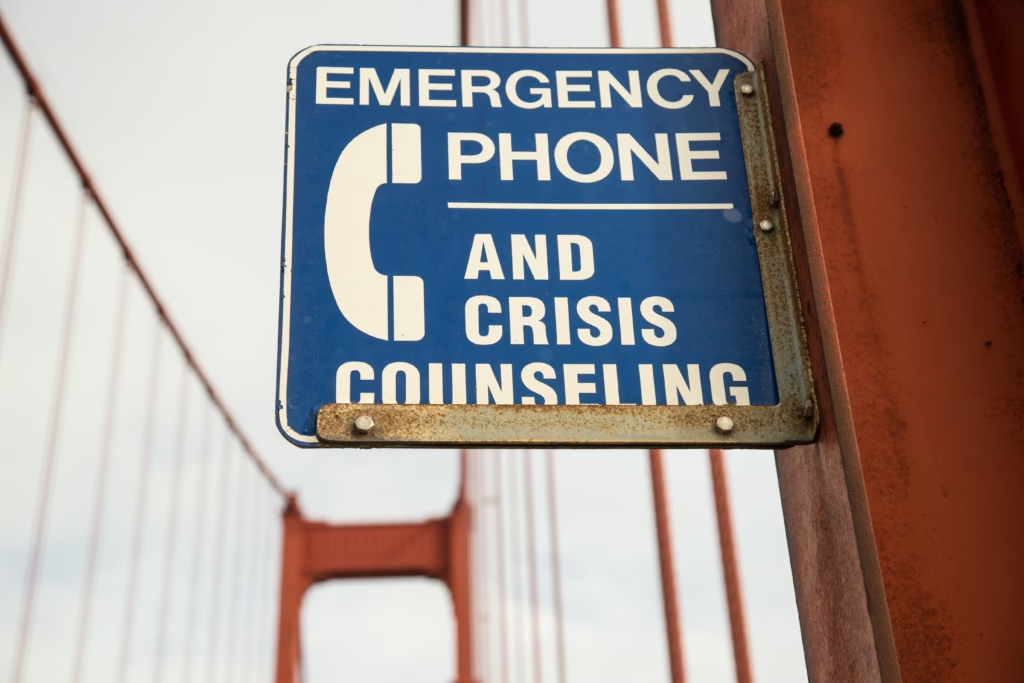Yes, Borderline Personality Disorder Is Highly Treatable
At 19, Emily’s life felt like it was unraveling. She cycled in and out of emergency rooms after self-harming episodes, convinced she was beyond help. She had seen therapists before, but they weren’t trained in borderline personality disorder (BPD), and their advice to “just manage stress better” left her feeling broken and hopeless.
But then, Emily found a therapist who specialized in evidence-based treatments for BPD. Instead of vague coping strategies, she was introduced to a structured program tailored to her symptoms.
Therapy wasn’t easy — in fact, at first, the sessions felt overwhelming, bringing up emotions she had spent years trying to avoid. But then, something shifted.
Week by week, she learned practical skills she could actually use when her emotions spiked, and her relationships began to feel less chaotic.

Emily’s story reflects what research has proven: psychotherapy is the gold-standard treatment for borderline personality disorder. Unlike medications, which may only reduce certain symptoms, therapy directly targets the root patterns of emotional dysregulation, impulsivity, and unstable relationships.
Multiple proven approaches exist — including Acceptance & Commitment Therapy, Dialectical Behavior Therapy (DBT), Mentalization-Based Therapy (MBT), Schema Therapy, and others — each designed to address different aspects of BPD.
Treatment usually requires 12–18 months of consistent psychotherapy, often combining individual therapy with group sessions for the best results. And while progress may feel slow at first, studies show that the majority of people with BPD improve significantly over time with proper treatment.
In fact, with consistent attendance and the right therapeutic relationship, many patients not only reduce their most severe symptoms but also begin to rebuild stable, meaningful lives.
The key takeaway: evidence-based psychotherapy works. Just like Emily, people living with BPD often discover that recovery isn’t about “fixing” who they are — it’s about learning new ways to manage emotions, navigate relationships, and move toward long-term healing.
Evidence-Based Psychotherapy Treatments
Psychotherapy is the gold-standard treatment for BPD. Multiple approaches, including dialectical behavior therapy, Schema Therapy, and others, have strong evidence showing they reduce self harm, emotional instability, and relationship chaos. Studies consistently show that with 12–18 months of consistent therapy, most people see significant improvement—and many achieve long-term recovery.

Psychotherapy represents the gold standard treatment for borderline personality disorder. Unlike many other mental health conditions where medication plays a primary role, bpd responds best to structured, evidence-based talk therapy approaches. These specialized treatments target the core features of the disorder: intense emotions, unstable relationships, impulsivity, and distorted self image.
Multiple proven therapy approaches exist, each tailored to different aspects of bpd symptoms. Research demonstrates that most evidence-based therapies require 12-18 months of consistent treatment for optimal results, though many people begin experiencing improvements within the first few months of engagement.
Treatment typically involves individual therapy, group sessions, or combination approaches. The therapeutic relationship between patient and mental health professional serves as the foundation for all successful interventions.
This relationship provides a safe space to practice new skills, process difficult emotions, and develop healthier ways to manage emotions and navigate interpersonal relationships.
Acceptance and Commitment Therapy (ACT)
When Daniel began Acceptance and Commitment Therapy (ACT), he was exhausted from years of fighting his emotions. Every time sadness or anger surfaced, he pushed it down — but then the pressure would build until it exploded in ways that damaged his relationships. He thought the only way to heal was to get rid of those emotions entirely.
But then, ACT introduced a different perspective: healing didn’t mean eliminating painful thoughts and feelings. Instead, Daniel learned to make space for them, treating emotions not as enemies but as signals. With practice, he discovered he could feel sadness or anger and still take actions aligned with his values — a radical shift from his old cycle of suppression and eruption.
This is the heart of ACT. It helps people with borderline personality disorder (BPD) reduce emotional avoidance and self-criticism by building psychological flexibility. Rather than framing intense emotions as problems to solve, ACT teaches patients to step back and change their relationship with internal experiences.
The process involves two key commitments:
Acceptance of painful thoughts and feelings, instead of futile attempts to erase them.
Committed action based on personal values, even when distress is present.
ACT’s practical techniques include:
Mindfulness practices that keep patients grounded in the present moment.
Defusion exercises that create distance from overwhelming thoughts.
Values clarification, helping individuals identify what truly matters and act accordingly.
Research shows ACT can significantly reduce impulsivity, self-harming behaviors, and emotional reactivity while improving life satisfaction. It has proven especially helpful for the chronic emptiness and identity disturbance common in BPD. Many clinicians integrate ACT alongside Dialectical Behavior Therapy (DBT) or Schema Therapy, creating a powerful combined treatment approach.
The key takeaway: ACT empowers people with BPD to stop waging war against their emotions and instead live more fully — not by erasing pain, but by learning to act with meaning in the presence of it.

Dialectical Behavior Therapy (DBT)
DBT stands as one of the most researched and effective treatments for borderline personality disorder. Specifically designed to treat bpd, DBT is recommended by NICE guidelines and has the most robust evidence base among bpd treatments.
This approach focuses on managing intense emotions and reducing self harming behaviors through a comprehensive skills-based program. DBT combines weekly individual therapy sessions with group skills training, creating multiple opportunities for learning and practice.
The treatment proves particularly effective for women with BPD who have a history of self harm and suicide attempts. Research shows DBT can reduce suicidal behaviors by up to 50% while significantly improving emotional regulation and interpersonal functioning.
DBT teaches four core skills modules:
Mindfulness: Learning to stay present and observe thoughts and feelings without judgment
Distress tolerance: Developing healthy ways to cope with crisis situations without making them worse
Emotion regulation: Understanding and managing intense emotions more effectively
Interpersonal effectiveness: Building skills to maintain relationships while respecting personal boundaries
The combination of individual and group therapy provides both personalized attention and peer support. Individual sessions focus on applying skills to specific life situations, while group therapy offers opportunities to practice with others facing similar challenges.

Other Specialized Therapies
Several additional evidence-based approaches show effectiveness in treating borderline personality disorder. Transference focused psychotherapy focuses on relationship patterns and self image, helping patients understand how past experiences influence current behaviors and relationships.
Schema Therapy addresses underlying emotional needs and coping patterns developed in childhood. This approach identifies and targets dysfunctional schemas—deeply rooted beliefs about oneself and the world—that contribute to bpd symptoms.
Therapeutic Communities provide structured group environments for individuals with complex cases who may benefit from intensive, residential treatment. These programs offer 24-hour therapeutic environments with peer support and intensive group work.
Arts therapies, including music, art, and drama therapy, provide non-verbal avenues for emotional expression and healing. These approaches can be particularly helpful for individuals who struggle to articulate their experiences through traditional talk therapy alone.
Medication Options and Support
When Daniel first started therapy for his borderline personality disorder (BPD) diagnosis, his emotions were so overwhelming that he couldn’t focus on learning new skills. Simple conversations with his therapist triggered such intense anger and fear that he’d shut down completely. He felt like therapy was just another failure.
But then, his psychiatrist prescribed a mood stabilizer. It didn’t “cure” his borderline personality disorder — because no medication can — but then something unexpected happened: the emotional storms that once drowned out everything began to quiet just enough for Daniel to stay present in therapy. For the first time, he could engage meaningfully in recovery work.
This is the role of medication in BPD treatment. While there are no FDA-approved medications specifically for borderline personality disorder, certain drugs can effectively manage symptoms that interfere with psychotherapy progress:
Antidepressants help address co-occurring major depressive disorder and stabilize mood swings, making day-to-day life feel more manageable.
Mood stabilizers reduce emotional intensity and impulsive behaviors, giving patients a greater chance to use therapeutic skills in real-world situations.
Antipsychotics, prescribed at low doses and usually short-term, can help during severe stress or brief psychotic episodes.
It’s important to emphasize: medication is always supportive, never the primary treatment. Specialized psychotherapy remains the gold standard, with medications simply reducing barriers to progress.
For Daniel, this combination made the difference. His therapist and psychiatrist worked together as a team, adjusting his treatment plan and medications as his recovery evolved. The collaboration didn’t erase his struggles overnight — but then, step by step, he was able to build the stability needed to heal.
Key takeaway: In BPD treatment, medication is not a cure. It’s a supportive tool that helps patients access and benefit from psychotherapy, the true engine of long-term recovery.
Recovery Timeline for Borderline Personality Disorder
The recovery timeline for borderline personality disorder varies significantly among individuals, but research provides encouraging benchmarks for what patients and families can expect. Most people with BPD show significant improvement within 2-4 years of consistent, evidence-based treatment.
Behavioral symptoms like impulsivity and self-harming typically improve faster than emotional symptoms such as chronic emptiness or identity disturbance. This pattern reflects the different neural pathways involved in behavioral control versus emotional regulation.
Promising Outcomes in Adolescents and Young Adults
Studies of adolescents with BPD show particularly promising outcomes, with about 65% achieving remission within 4 years of diagnosis. Early adulthood represents an optimal window for intervention due to increased brain plasticity and fewer entrenched behavioral patterns.
Long-Term Prognosis and Functional Recovery
Long-term longitudinal studies reveal remarkable recovery rates, with remission rates reaching over 90% within 10-16 years. These studies track individuals over decades, providing robust evidence that borderline personality disorder has an excellent long-term prognosis when appropriate treatment is received.
However, functional recovery in relationships and work may take longer than symptom improvement. While emotional symptoms may stabilize relatively quickly, rebuilding trust in relationships and developing stable career patterns often requires additional time and support.
Key Insights from Research
The key insight from research is that BPD symptoms naturally improve over time, and this natural recovery process is significantly accelerated by appropriate treatment. Age appears to be a protective factor, with symptoms often becoming more manageable as individuals mature.
Crisis Management and Hospitalization
Crisis situations are common during the course of borderline personality disorder (BPD) treatment, and having appropriate safety plans in place can prevent escalation and ensure proper care during difficult periods. Crisis Resolution Teams provide intensive support during severe episodes, offering specialized intervention to help individuals navigate acute crises without requiring hospitalization.
Short-term psychiatric hospitalization may be necessary for safety during crisis periods when there’s an increased risk of suicide attempts or severe self-harming behaviors. Hospital treatment focuses on preventing self harm and managing suicidal thoughts through intensive monitoring and stabilization.
The goal of any psychiatric hospitalization is quick discharge back to community-based treatment when safe. Extended hospitalization is generally not recommended for BPD, as it can interfere with the development of real-world coping skills and independence.
24/7 crisis support numbers are typically provided to BPD patients and their family members as part of comprehensive treatment planning. These resources ensure that help is available during the most difficult moments, potentially preventing crisis escalation.
Effective crisis management involves collaboration between the individual, their therapeutic relationship, family members, and emergency services when necessary. Having a detailed safety plan that includes warning signs, coping strategies, and emergency contacts can significantly reduce the need for crisis intervention.

Treatment Considerations for Different Age Groups
Diagnosis and Early Intervention in Adolescents
BPD can be reliably diagnosed and treated in adolescents aged 13 and older, contrary to outdated beliefs that personality disorders couldn’t be diagnosed until adulthood. Early intervention during adolescence is optimal due to brain plasticity and the opportunity to interrupt harmful patterns before they become deeply entrenched.
Treatment for Young Adults
Young adults often respond particularly well to intensive treatments like dialectical behavior therapy because they’re still developing their identity and relationship patterns. This developmental stage provides unique opportunities for positive change and skill acquisition.
Approaches for Adults
Adult treatment focuses on established patterns and relationship stability, requiring approaches that address decades of ingrained behaviors and coping mechanisms. Adults may need longer treatment periods but can still achieve excellent outcomes with appropriate interventions.
Considerations for Older Adults
Older adults with BPD may need treatment adjusted for age-related health issues and cognitive changes. However, research suggests that BPD symptoms often naturally improve with age, making treatment in later life highly effective.
Tailoring Treatment to Life Stage
Treatment approaches are carefully adapted for developmental stage and life circumstances. Adolescent programs often involve family therapy components, while adult treatments may focus more on workplace functioning and intimate relationships.
Factors That Improve Treatment Success
Early and Accurate Diagnosis
Several key factors consistently predict better outcomes in bpd treatment. Early accurate diagnosis leads to significantly better long-term outcomes by ensuring individuals receive appropriate, specialized care rather than generic mental health services.
Consistent Therapy Attendance
Consistent attendance at therapy sessions proves crucial for progress. The skills taught in evidence-based treatments require practice and repetition to become effective coping tools. Regular engagement allows for the development of strong therapeutic relationships and consistent skill application.
Strong Therapeutic Relationship
A strong therapeutic relationship between patient and mental health professional forms the foundation of successful treatment. This relationship provides safety and trust necessary for exploring difficult emotions and practicing new behaviors.
Family Support and Education
Family support and education about bpd symptoms and treatment significantly improve outcomes. When family members understand the nature of the disorder and learn how to respond supportively, it creates a more healing environment for recovery.
Addressing Co-occurring Conditions
Addressing co-occurring conditions like eating disorders, anxiety, or substance abuse ensures comprehensive care. These additional mental health conditions can interfere with bpd treatment if left unaddressed.
Cultural Sensitivity and Gender Awareness
Cultural sensitivity and awareness of gender biases in diagnosis and treatment help ensure appropriate care for diverse populations. Understanding how cultural factors influence symptom expression and help-seeking behavior improves treatment engagement.

Barriers to Accessing Appropriate Care
Despite the clear evidence that borderline personality disorder is treatable, several barriers continue to prevent individuals from accessing appropriate care. Stigma around the BPD diagnosis remains one of the most significant obstacles, with some mental health professionals still holding outdated beliefs about treatment resistance.
Many general practitioners and even mental health specialists may not recognize BPD symptoms or know how to make appropriate referrals for specialized treatment. This leads to years of ineffective treatment with general approaches that don’t address the specific needs of individuals with personality disorders.
Challenges in Finding Specialized Treatment
Finding a mental health professional trained in BPD-specific therapies can be challenging, particularly in rural or underserved areas. The specialized nature of effective treatments requires additional training that not all therapists have received.
Insurance coverage for long-term psychotherapy treatment presents ongoing challenges. While medication for other mental disorders is typically covered, the extended talk therapy required for BPD treatment may face coverage limitations.
Building Trust and Persistence in Treatment
Building trust with healthcare providers after previous negative experiences requires patience and often multiple attempts to find the right therapeutic match. Many individuals with BPD have experienced judgment or dismissal from healthcare providers, making it difficult to engage in new treatment relationships.
Waiting for appropriate treatment can be frustrating, but persistence in seeking qualified care makes a significant difference in outcomes. Online directories of trained therapists and patient advocacy organizations can help identify appropriate treatment resources.
Taking the First Step Toward Recovery
The message for anyone struggling with borderline personality disorder is clear: recovery is not only possible but probable with appropriate treatment. The days of viewing BPD as untreatable are long past, replaced by evidence-based hope and effective interventions that help millions of people reclaim their lives.
If you’re struggling with BPD symptoms or suspect you might have borderline personality, seeking a comprehensive mental health evaluation from a qualified mental health professional represents the first step toward recovery. The journey may not be easy, but it leads to a life worth living—one where intense emotions no longer control your choices, where relationships can be stable and fulfilling, and where you can build the future you want.
Importance of Accurate Diagnosis and Professional Help
Remember that getting an accurate diagnosis and connecting with the right treatment is a process that may take time. Don’t give up if the first provider you see isn’t the right fit. The Diagnostic and Statistical Manual of Mental Disorders has clear diagnostic criteria for BPD, and qualified professionals can provide proper assessment and treatment recommendations.
Professional help is available, effective, and worth pursuing. Your life, your relationships, and your future are worth the investment in specialized treatment that can help you learn skills to manage your symptoms and build the life you deserve.
Ready to Start Your Healing Journey?
Living with borderline personality disorder can feel overwhelming, but you don’t have to face it alone. With the right support, recovery is possible—and your life can be more stable, fulfilling, and aligned with your values.
If you’re ready to take the first step, I invite you to schedule a confidential consultation today. Together, we’ll clarify what you’re going through, explore whether BPD may be part of your story, and map out a treatment plan that actually works.
You deserve more than surviving day-to-day. You deserve a life where your emotions no longer run the show, where your relationships feel safe, and where you can finally move toward the future you’ve been hoping for.
👉 Learn more about my specialized counseling for Borderline Personality Disorder





